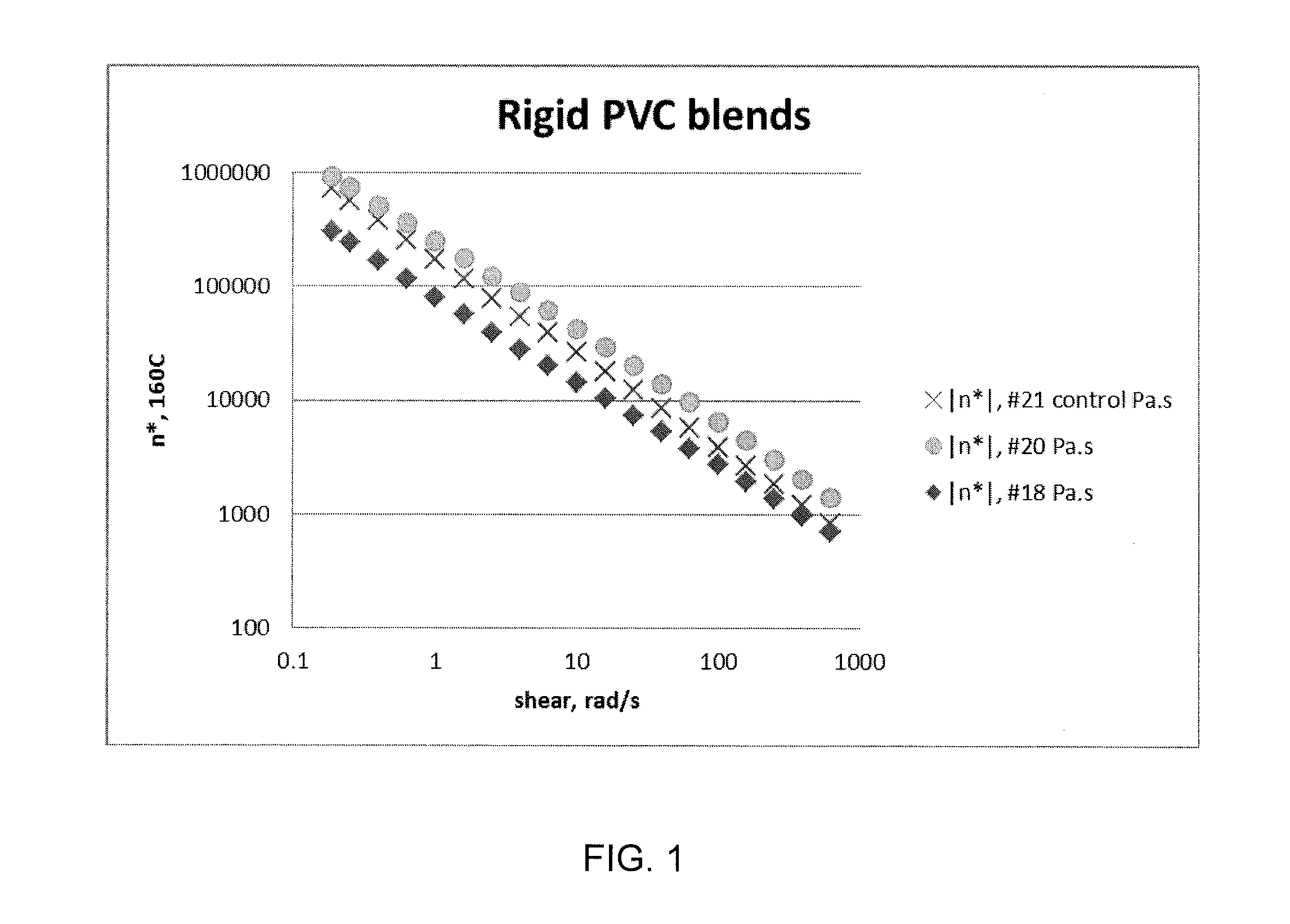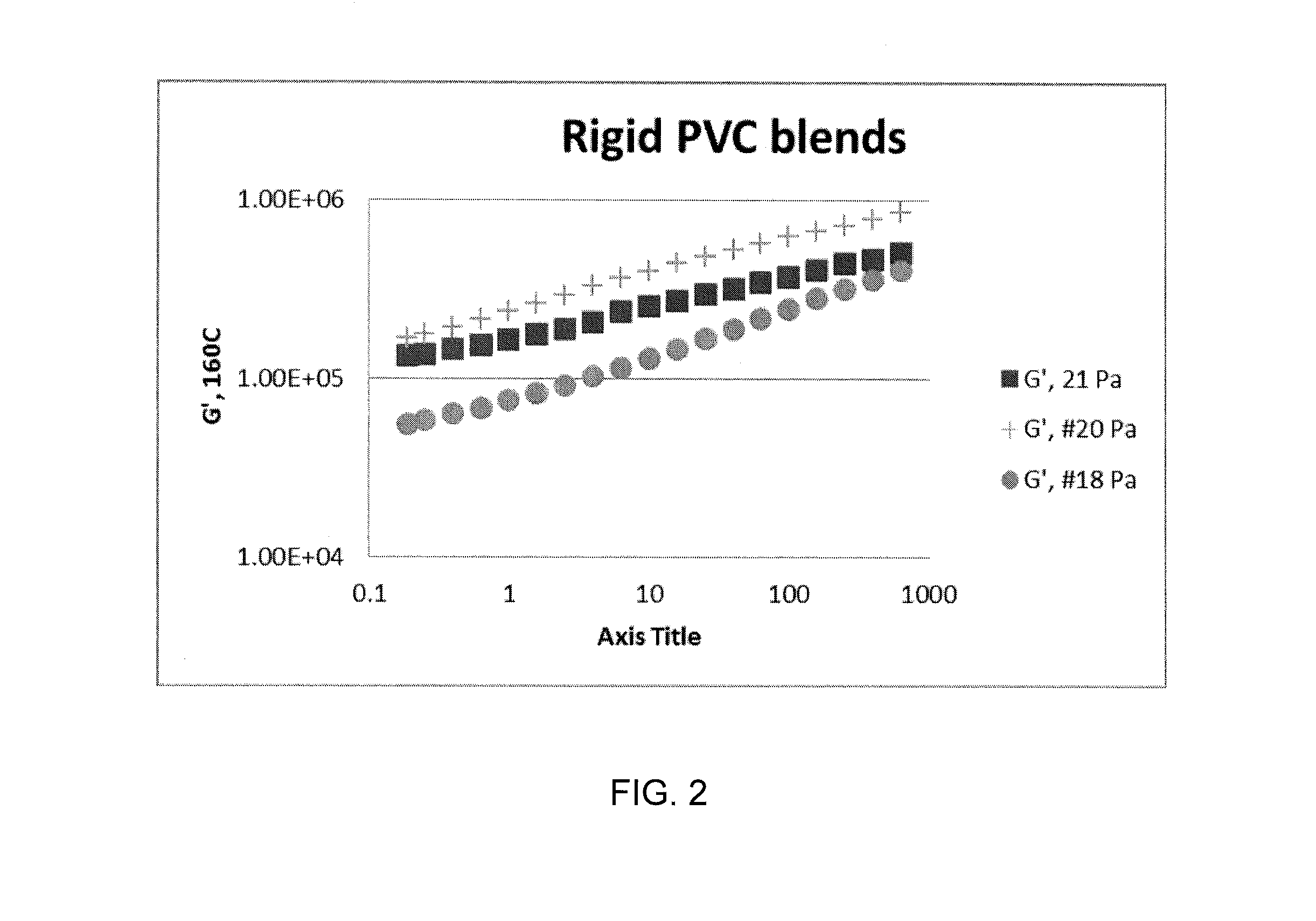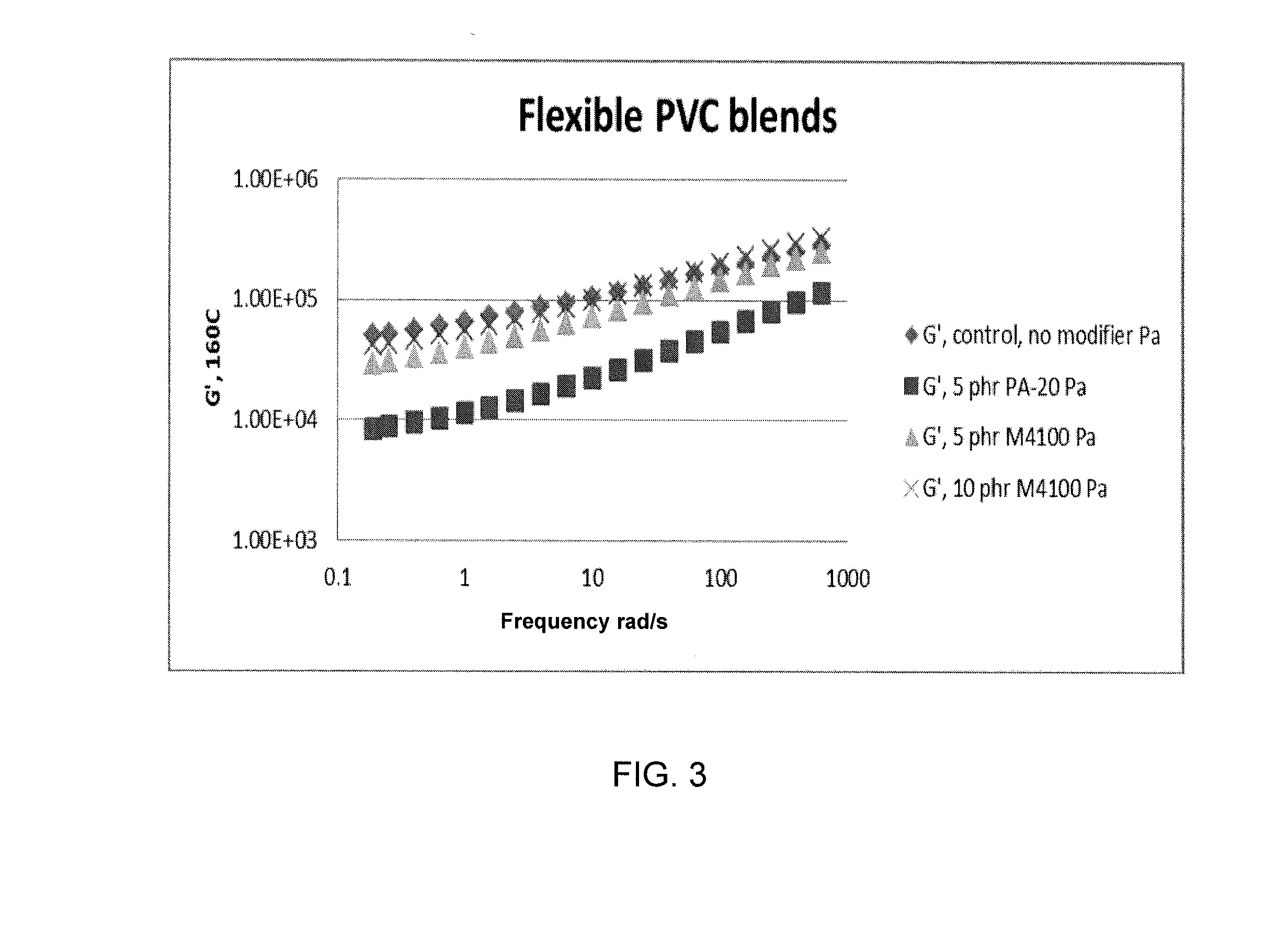Biobased Rubber Modifiers for Polymer Blends
- Summary
- Abstract
- Description
- Claims
- Application Information
AI Technical Summary
Benefits of technology
Problems solved by technology
Method used
Image
Examples
example 1
Addition of a Rubbery PHA Copolymer to Rigid PVC—Effect on Thermal, Mechanical and Melt Properties
[0202]In this example, PHA E, a rubbery 30% 4HB copolymer, was added to a rigid PVC formulation (0% DIDP plasticizer) @28 phr (20% by weight) and the effect on the impact properties of the blend were evaluated. Table 3 summarizes the thermal and mechanical testing results for this blend.
TABLE 3Summary of mechanical and thermal properties of a rigid PVC@100 phr(0% DIDP) / PHA E @28 phr blend.PropertyFormulation 1Tg (° C.)32.3Tensile Modulus (MPa)1407Tensile Strain @break102(MPa)Tensile Toughness3.31(J)Flexural Modulus (MPa)1202Low TemperaturepassedBrittleness (5° C.)Izod Impact Strength (ft>18lb / in)Shore D Hardness66
[0203]The results in Table 3 show that the rubbery PHA E was completely miscible with the PVC as evidenced by the single Tg value measured by DMA analysis. Since pure PVC has a single Tg at approximately 70° C., the results in Table 1 also indicated that the rubbery PHA E was v...
example 2
Addition of PHA to Rigid PVC—Effect of Thermal Stabilizer Package
[0207]In this example, changes in the impact strength for a rigid PVC / PHA blend versus the type of PVC thermal stabilizer incorporated are compared. The PVC resin used to prepare the samples was OXYVINYLS™ 240 a high molecular PVC with K=70. The PHA used was the amorphous or rubbery copolymer, PHA F, having a % 4HB content of 30% by weight. The samples for impact strength testing (Formulations #20 and #32) were prepared according to the procedure described previously. Formulation #20 shown in Table 5 was prepared using the liquid BaZn stabilizer, M4781A (Galata Chemicals), having a Ba / Zn ratio=5.7 and a 5.33% by wt. phosphorus containing compound while Formulation 32 was stabilized with a solid BaZn salt of unknown composition (NAFTOSAFE™ PKP1028, Chemson Polymer Additive AG) and a phosphite (Doverphos-HIPURE™ 4, ICC Industries). Both formulations contained the same amount of epoxdized soybean oil (secondary plasticize...
example 3
Addition of Crosslinked PHA to Rigid PVC
[0209]In this example, PHA C (40% amorphous rubber P3HB-4HB with 28-32% by wt. 4HB) and H (100% amorphous rubber P3HB-4HB with 55% by wt. 4HB) were crosslinked prior to melt blending with a rigid PVC polymer in order to enhance the impact modification properties of the PVC. Initially, PHA C and H were compounded with a peroxide initiator masterbatch consisting of 5% by weight T101™ peroxide blend with PHA B. For the compounding of PHA C or H with the peroxide masterbatch, a Prism, 16 mm twin screw extruder operating @150 rpm was used with the following extrusion temperatures (inlet to outlet): 172° C. / 174° C. / 175° C. / 177° C. / 177° C. / 179° C. / 179° C. / 179° C. Following reactive extrusion, the crosslinked PHA C or H was formed into strands and cooled in a water bath set at room temperature. The strands were then dried and cut into pellets or cryogrind under liquid nitrogen into a powder. The final concentration of peroxide in PHA C and H was varie...
PUM
| Property | Measurement | Unit |
|---|---|---|
| Temperature | aaaaa | aaaaa |
| Temperature | aaaaa | aaaaa |
| Temperature | aaaaa | aaaaa |
Abstract
Description
Claims
Application Information
 Login to View More
Login to View More - R&D
- Intellectual Property
- Life Sciences
- Materials
- Tech Scout
- Unparalleled Data Quality
- Higher Quality Content
- 60% Fewer Hallucinations
Browse by: Latest US Patents, China's latest patents, Technical Efficacy Thesaurus, Application Domain, Technology Topic, Popular Technical Reports.
© 2025 PatSnap. All rights reserved.Legal|Privacy policy|Modern Slavery Act Transparency Statement|Sitemap|About US| Contact US: help@patsnap.com



